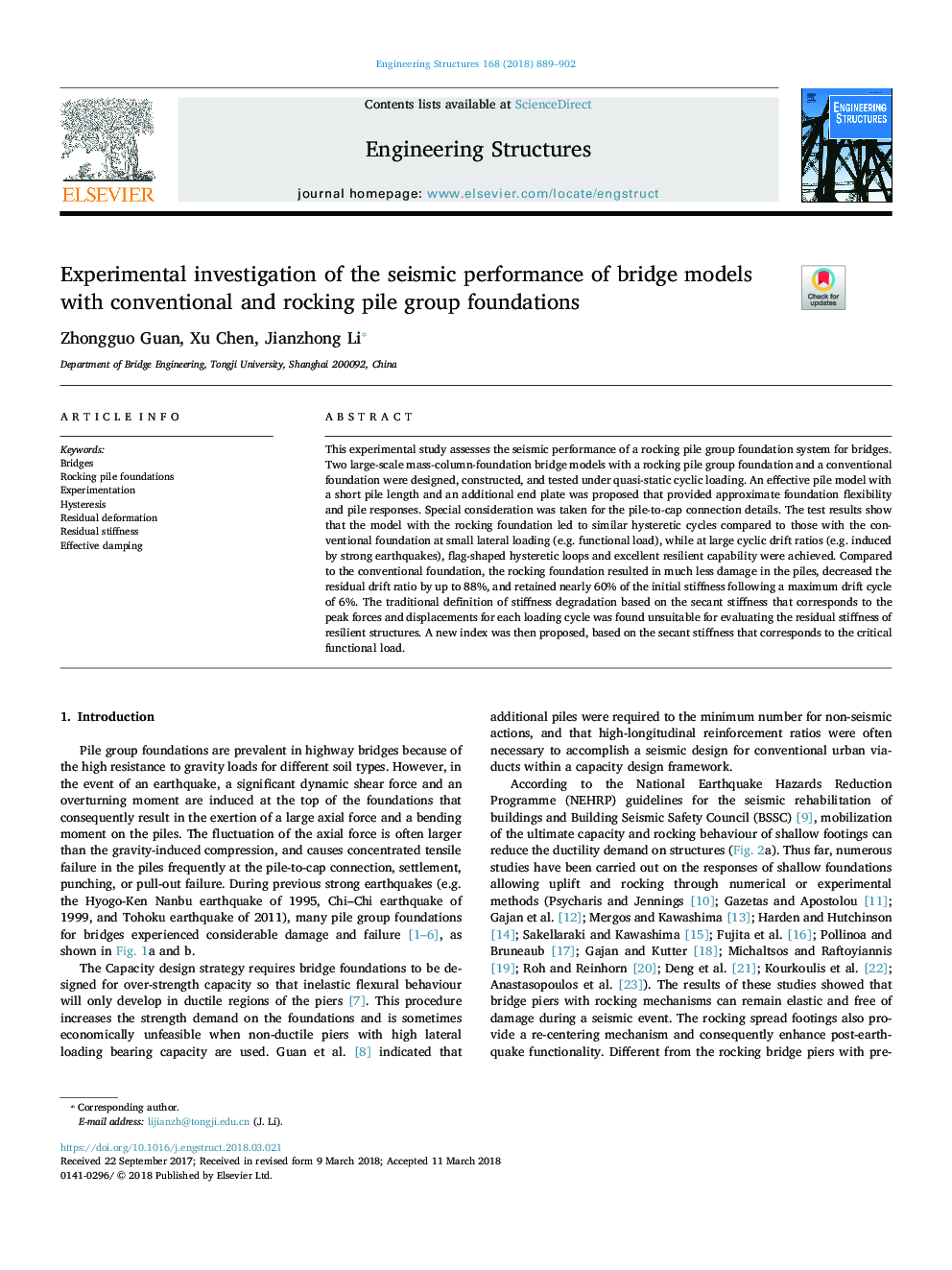| Article ID | Journal | Published Year | Pages | File Type |
|---|---|---|---|---|
| 6737381 | Engineering Structures | 2018 | 14 Pages |
Abstract
This experimental study assesses the seismic performance of a rocking pile group foundation system for bridges. Two large-scale mass-column-foundation bridge models with a rocking pile group foundation and a conventional foundation were designed, constructed, and tested under quasi-static cyclic loading. An effective pile model with a short pile length and an additional end plate was proposed that provided approximate foundation flexibility and pile responses. Special consideration was taken for the pile-to-cap connection details. The test results show that the model with the rocking foundation led to similar hysteretic cycles compared to those with the conventional foundation at small lateral loading (e.g. functional load), while at large cyclic drift ratios (e.g. induced by strong earthquakes), flag-shaped hysteretic loops and excellent resilient capability were achieved. Compared to the conventional foundation, the rocking foundation resulted in much less damage in the piles, decreased the residual drift ratio by up to 88%, and retained nearly 60% of the initial stiffness following a maximum drift cycle of 6%. The traditional definition of stiffness degradation based on the secant stiffness that corresponds to the peak forces and displacements for each loading cycle was found unsuitable for evaluating the residual stiffness of resilient structures. A new index was then proposed, based on the secant stiffness that corresponds to the critical functional load.
Related Topics
Physical Sciences and Engineering
Earth and Planetary Sciences
Geotechnical Engineering and Engineering Geology
Authors
Zhongguo Guan, Xu Chen, Jianzhong Li,
